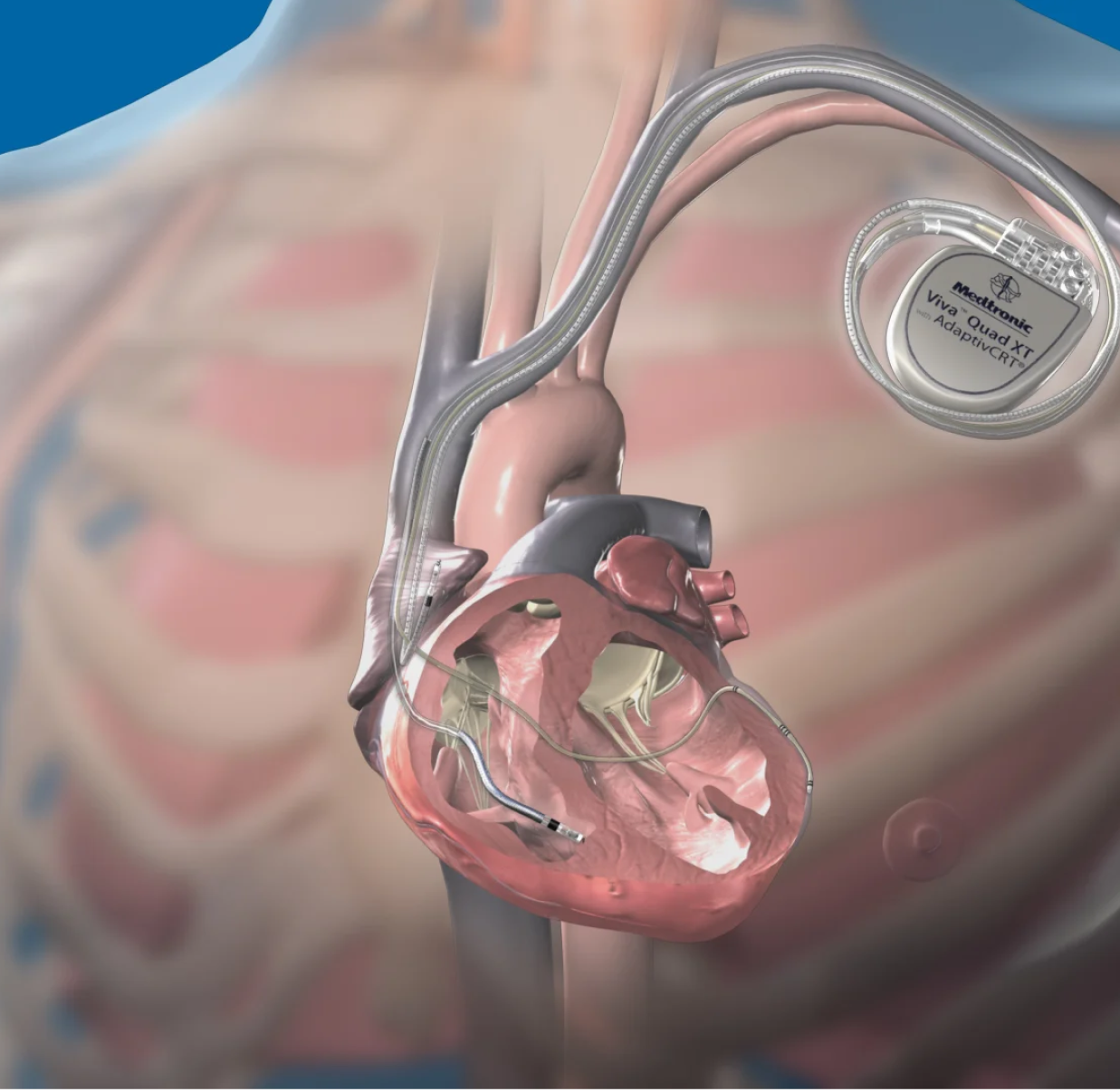
Procedures
Defibrillator Implant
Defibrillator Implant
An implantable cardioverter defibrillator (ICD) is a compact device designed to address irregular heart rhythms known as arrhythmias, specifically targeting rapid rhythms occurring in the heart's lower chambers, known as ventricles. Two such arrhythmias include ventricular tachycardia (VT) and ventricular fibrillation (VF).
Arrhythmias stem from disruptions in the heart's electrical system, where electrical signals typically follow specific routes. These signals prompt the heart to contract. To delve deeper into the heart's electrical system, refer to the Heart & Blood Vessel Basics section.
However, during VT or VF, an excessive number of signals are generated in the ventricles, often straying from their intended pathways. The heart attempts to beat in response to these signals, but it struggles to pump sufficient blood to the body. If you experience either VT or VF, you face a heightened risk of sudden cardiac arrest (SCA). Without prompt defibrillation treatment, SCA can lead to sudden cardiac death (SCD).
An ICD steps in to manage VT and VF, reinstating a regular heart rhythm and thereby diminishing the risk of SCD. This device offers various treatment options:
Anti-tachycardia pacing (ATP) administers minute amounts of energy to your heart, at a level imperceptible to you.
Cardioversion employs a mild electrical shock to address swift yet regular arrhythmias.
Defibrillation employs a potent electrical shock to manage swift and disordered (irregular) rhythms. While momentarily uncomfortable, defibrillation can also be life-saving.
An implantation procedure is typically conducted under local anesthesia, often eliminating the need for general sedation.
Following device implantation, regular checks are essential to review the stored data and monitor settings. These assessments can occur either at the clinic or through convenient remote monitoring from the patient's own home.
Remote monitoring involves the use of a compact device that can be placed on a bedside table to gather data from the cardiac implant. Data is collected on a frequency determined by the system's programming and the specific type of implanted device. This information is then transmitted via a standard landline connection to a secure website accessible only to the patient's healthcare support team. This approach often leads to a reduction in the number of in-person visits required for device follow-ups. However, it's important to note that not all devices are compatible with remote monitoring.
How is the implant procedure done?
An lmplantable cardioverter defibrillator (ICD)system has two parts:
Device -the device is quite small and easily fits in the palm of your hand. lt contains small computerized parts that run on a battery.
Leads - are thin, insulated wires that connect the device to your heart. The leads carry electrical signals back and forth between your heart and your device.
The leads are carefully inserted by your doctor, typically through a small incision near your collarbone. Using a real-time imaging technique called fluoroscopy, your doctor guides the leads through your blood vessels and into your heart.
After this, the leads are securely connected to the device, and a thorough test is conducted to ensure their seamless operation in delivering treatment. Finally, the device is positioned just beneath the skin near your collarbone, and the incision is closed with stitches.
What can I expect?
Before the procedure, you're typically advised not to consume food or drink for several hours. Upon arrival, you change into a hospital gown or use a sheet for coverage. The procedure takes place in a specialized room known as a "cath lab". Once settled on the examination table, an intravenous (IV) line is established in your arm to administer fluids and medications. These medications induce a state of drowsiness but not unconsciousness.
The doctor creates a small incision near your collarbone to introduce the leads. The area is numbed to mitigate any pain, though you might feel slight pressure as the leads are inserted. When testing the device, you might be administered sedation, as it administers a shock to your heart.
While some individuals may spend a night in the hospital, there could be tenderness at the incision site. Post-procedure, most individuals experience a relatively swift recovery.

